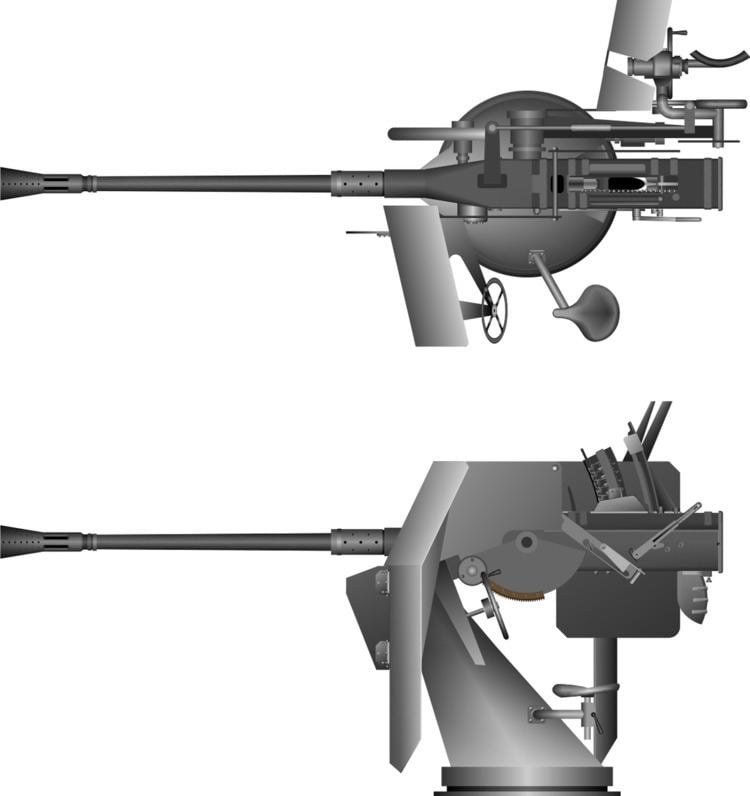Ordered 5 June 1941 Laid down 23 January 1943 Launched 23 October 1943 Draft 4.74 m | Yard number 683 Commissioned 20 November 1943 Construction started 23 January 1943 Length 67 m Beam 6.18 m | |
 | ||
Builder | ||
German submarine U-249 was a Type VIIC U-boat of Nazi Germany's Kriegsmarine during World War II. The submarine was laid down on 23 January 1943 at the Friedrich Krupp Germaniawerft yard at Kiel as yard number 683, launched on 23 October 1943 and commissioned on 20 November under the command of Oberleutnant zur See Rolf Lindschau.
Contents
In two patrols, she sank no ships.
She surrendered in May 1945 and was sunk in December as part of Operation Deadlight.
Design
German Type VIIC submarines were preceded by the shorter Type VIIB submarines. U-249 had a displacement of 769 tonnes (757 long tons) when at the surface and 871 tonnes (857 long tons) while submerged. She had a total length of 67.10 m (220 ft 2 in), a pressure hull length of 50.50 m (165 ft 8 in), a beam of 6.20 m (20 ft 4 in), a height of 9.60 m (31 ft 6 in), and a draught of 4.74 m (15 ft 7 in). The submarine was powered by two Germaniawerft F46 four-stroke, six-cylinder supercharged diesel engines producing a total of 2,800 to 3,200 metric horsepower (2,060 to 2,350 kW; 2,760 to 3,160 shp) for use while surfaced, two AEG GU 460/8–27 double-acting electric motors producing a total of 750 metric horsepower (550 kW; 740 shp) for use while submerged. She had two shafts and two 1.23 m (4 ft) propellers. The boat was capable of operating at depths of up to 230 metres (750 ft).
The submarine had a maximum surface speed of 17.7 knots (32.8 km/h; 20.4 mph) and a maximum submerged speed of 7.6 knots (14.1 km/h; 8.7 mph). When submerged, the boat could operate for 80 nautical miles (150 km; 92 mi) at 4 knots (7.4 km/h; 4.6 mph); when surfaced, she could travel 8,500 nautical miles (15,700 km; 9,800 mi) at 10 knots (19 km/h; 12 mph). U-249 was fitted with five 53.3 cm (21 in) torpedo tubes (four fitted at the bow and one at the stern), fourteen torpedoes, one 8.8 cm (3.46 in) SK C/35 naval gun, 220 rounds, and an anti-aircraft gun. The boat had a complement of between forty-four and sixty.
FLAK weaponry
U-249 was mounted with a single 3.7 cm Flakzwilling M43U gun on the rare LM 43U mount. The LM 43U mount was the final design of mount used on U-boats and is only known to be installed on U-boats (U-821, U-977, U-1023, U-1171, U-1305 and U-1306). The 3.7 cm Flak M42U was the marine version of the 3.7 cm Flak used by the Kriegsmarine on Type VII and Type IX U-boats. U-249 was mounted with two 2cm Flak C38 in a M 43U Zwilling mount with short folding shield on the upper Wintergarten. The M 43U mount was used on a number of U-boats (U-190, U-250, U-278, U-337, U-475, U-853, U-1058, U-1109, U-1023, U-1105, U-1165 and U-1306).
Service history
After training with the 5th U-boat Flotilla at Kiel, U-249 remained with that organization for front-line service from 1 January 1945.
1st patrol
The boat's first patrol was preceded by a pair of short trips between Kiel in Germany, and Kristiansand and Bergen in Norway. Her first sortie proper started with her departure from Bergen on 7 March 1945. It finished in the same port on 16 March. While sailing on another non-classifiable voyage, she shot a Mosquito of No. 235 Squadron RAF down. The pilot was captured.
2nd patrol and surrender
She left Bergen on 3 April 1945 and arrived at Portland, UK, flying the black flag of surrender on 10 May.
She was then briefly used by the British as the research ship N 86 before being transferred to Loch Ryan in Scotland for Operation Deadlight. She was sunk on 13 December 1945.
In May 2013 her official visitors' book, and Captain Kock's fixed-focus Zeiss binoculars, taken as spoils of war by the British officer who commanded her prize crew, were shown on the BBC television series Antiques Roadshow by the officer's son, himself a former submarine captain, who used the binoculars during his career.
